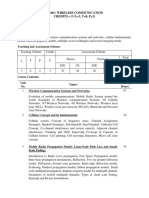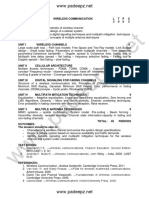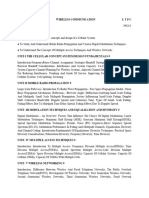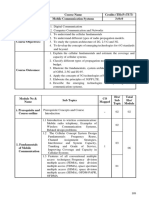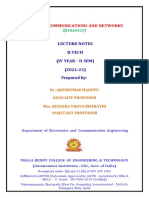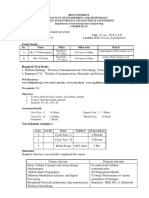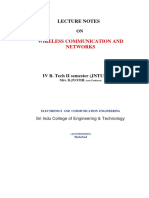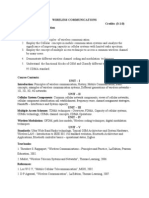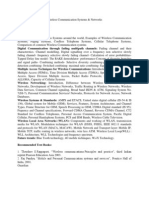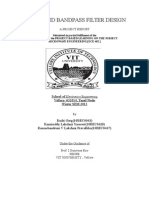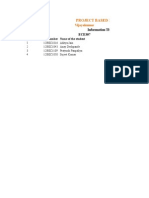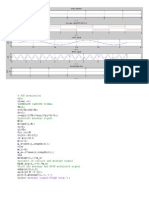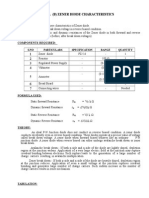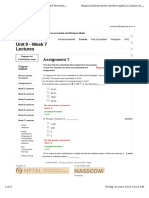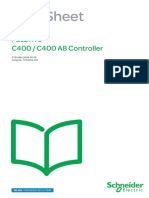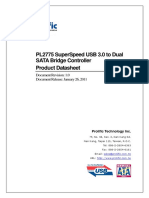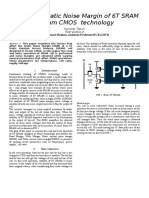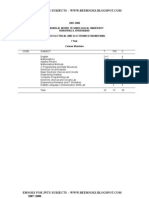0% found this document useful (0 votes)
152 views2 pagesWireless & Mobile Communication Course
This course introduces students to wireless and mobile communication. It covers cellular concepts, mobile radio propagation models, OFDM techniques, wireless communication standards from 1G to 4G, and mitigation of multipath propagation. The course objectives are to understand cellular structure, signal propagation in mobile environments using propagation models, standards used in wireless communication, and mitigation techniques. Upon completing the course, students will be able to analyze cellular systems, apply propagation models, specify OFDM applications, illustrate wireless standards, and describe multipath mitigation techniques. The course meets student outcomes in applying engineering knowledge, formulating and solving problems, and understanding technology's societal impacts.
Uploaded by
Aditya JainCopyright
© © All Rights Reserved
We take content rights seriously. If you suspect this is your content, claim it here.
Available Formats
Download as DOC, PDF, TXT or read online on Scribd
0% found this document useful (0 votes)
152 views2 pagesWireless & Mobile Communication Course
This course introduces students to wireless and mobile communication. It covers cellular concepts, mobile radio propagation models, OFDM techniques, wireless communication standards from 1G to 4G, and mitigation of multipath propagation. The course objectives are to understand cellular structure, signal propagation in mobile environments using propagation models, standards used in wireless communication, and mitigation techniques. Upon completing the course, students will be able to analyze cellular systems, apply propagation models, specify OFDM applications, illustrate wireless standards, and describe multipath mitigation techniques. The course meets student outcomes in applying engineering knowledge, formulating and solving problems, and understanding technology's societal impacts.
Uploaded by
Aditya JainCopyright
© © All Rights Reserved
We take content rights seriously. If you suspect this is your content, claim it here.
Available Formats
Download as DOC, PDF, TXT or read online on Scribd
/ 2


